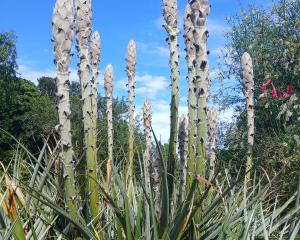
Some years ago, I wanted a blue Californian lilac bush (Ceanothus) to replace one that had died.
I went to every garden centre I could to try to track one down but had no joy.
A garden centre owner, who had tried unsuccessfully to source the shrub for several customers, explained the reason.
"The trouble is, it's out of fashion," he said.
Television and garden magazines have a big influence on what is in or out.
The year green predominated at London's Chelsea Flower Show, everyone wanted that.
Then it was purple, and the following year rust.
Historically, what was in fashion had a lot to do with what was available, so imagine the excitement when great 18th-century plant hunters such as Robert Fortune returned to England from China with a shipload of hitherto unknown goodies.
Men like Fortune were acquiring plants for the wealthy and the notion of ordinary people growing plants for pleasure, not just for the table, did not really take off until Victorian times, when men (women didn't get much of a look in) began growing prize specimens to exhibit at horticultural shows.
Seed catalogues, nursery advertisements and show reports are guides to popularity.
There were, for example, 200 different varieties of sweet pea on display at a London show in 1899.
Plant fashions may be as cyclic as climate patterns, dictated by shrinking gardens and the wish for easy-care patches, as well as a concern about the effects of using toxic sprays.
Trailing marrows and nasturtiums have been superseded by more compact varieties, heritage roses that need no spraying are edging out the hybrid teas, and grasses are the "in" plant for the easy-care garden, while southern gardeners are realising that we can grow paeony roses, delphiniums and lilies better than just about anywhere in the world.
The economic downturn is starting to influence garden fashions.
As people travel less and have time to replace the three large grasses in a sea of gravel with a proper garden, the demand for fruit trees, vegetable plants and seeds is soaring, and composting and worm farms are in vogue.
It's a trend to encourage.
Footnote: The Ceanothus story has a sequel. A year or so after I stopped searching, a new variety flooded the market.
You can't always win.












